| |
| Abstract
Virtual product development today has become a
complex process involving CAD, FEA, CAE, and physical testing. Material
properties form the glue that link the simulation and real life
behavior together. Most often, the properties of the materials used
in different stages of the product life cycle vary depending on
the application. Hence, the engineers and technicians within the
enterprise need to have access to not just the simple single point
properties that help determine the suitability of a material, but
also the more detailed behavioral property data that affect design,
simulation and failure analyses. A common platform for the storage
and effective deployment of these properties system wide is critical
to the efficiency, cost, and quality control through PLM. We present
a technology, Matereality that accommodates diverse properties of
all the different materials used by an enterprise, its suppliers
and collaborators. The cost benefits are immediate, besides improved
interoperability and consistency in material data use through the
enterprise.
Introduction
As the role of digital product development continues
to solidify within enterprises [1], the need for systems to support
the needs for this new technology become more and more urgent. In
the past, CAE was relegated to a corner of the product development
process where timeliness and accuracy were secondary to the core
purpose of verifying the viability of the technology itself. With
the mainstreaming of the technology, these luxuries are no longer
available to CAE analysts and it is now imperative to deliver timely
and accurate information to facilitate the design process.
In such an environment, there is no place for
unproductive work nor is there tolerance for error in analysis because
now, key design decisions are being based upon the results of a
CAE simulation. Indeed, the viability of CAE groups and the industry
itself would be called into question should it be found to be lacking
in its ability to provide sustained value to the enterprise. This
is a novel burden for the CAE industry and to resolve it, one must
look for parallels in other industry horizontals to see how they
have adapted themselves to the challenge [2]. We believe that supply
chain integration and standards based data management are key technologies
that will help to streamline and increase productivity in the digital
product development industry.
That being said, it is clear that significant
challenges exist in the achievement of these goals. Unlike the financials
business or even the manufacturing horizontals, product development
involves a huge variety of applications. CAE itself could involve
NVH, stiffness/failure, crash/rate dependency, thermal/thermomechanical,
forming/process simulation, large deformation-hyperelastic/hyperfoam,
stress relaxation/creep-viscoelasticity. Case-specific complexity
is introduced in each vertical in which the development occurs.
Further, materials play a key role in fleshing out this complexity
as each vertical leans toward its own favorite materials, which
it deems appropriate for the manufacture of its products. In this
paper, we tackle the materials problem and demonstrate a framework
that uses both supply chain integration and standards based data
management technologies to provide comprehensive content management
for enterprises. We illustrate the benefits of this technology to
the enterprise and provide a model upon which companies can save
time and money while reducing risk in the product development process.
Current situation:
the case of the 'Lone Ranger' CAE analyst.
CAE analysts today perform a variety of simulations on products
that are constituted from many kinds of materials. Each simulation
requires the use of specific material models that describe the material
behavior in that particular application. It is critical that they
use for these material models, quality properties that are self-consistent
and application appropriate. The material models are usually created
by the analyst after expending anywhere between several hours to
a week of time and effort to convert the material properties available
to them into the format required by the CAE analysis. Consequently,
material models are highly cherished and each analyst has her/his
own private model collection. Because of the sophisticated needs
of material properties for designers, there are no comprehensive
data stores that can store such data in a truly digital format.
Accordingly, this valuable data sits on the analyst's desktop or
within a small group and is typically not available to the enterprise.
Analysts typically will not share models for fear of use in inappropriate
applications. Because models do not contain the underlying material
properties and data pedigree, their value is further diminished;
the data is not easily re-used since other users cannot judge its
quality/authenticity. The enterprise has fragmented access to this
data and a system for streamlined sharing with collaborators is
difficult. A NIST study [2] estimates that the automotive industry
alone loses $1B per year due to interoperability problems related
to data that is no longer available. Foundyller further supports
this claim by noting that such information is usually never available
at the time when critical decisions are being made[3]. This unavailability
of data costs in terms of direct dollars for re-testing, and time
loss, besides adding to the risk of misused data in the design process.
Such private, disintegrated data stores within the enterprise represent
what we call the Lone Ranger scenario.
|
|
|
Desired
situation: the need of the global enterprise
As the enterprise transforms the way in which it designs and manufactures
products, moving from monolithic to distributed models, the IT infrastructure
must be similarly aligned to accommodate the requirements of the enterprise.
Just as materials are sourced from suppliers to the enterprise, so
must content management systems be able to seamlessly source data
and digital information that may be used to represent the materials
in the digital world.
Because a material is a clearly defined entity,
all the information related to it must also be self-consistent and
accurately represent the material in the digital world. Further,
all analysts in the present and the future, globally must have access
to the same information so that analysts anywhere and at any time
produce the same consistent digital work product. This is a daunting
task without a framework capable of handling such complexity. Matereality
represents such a sophisticated solution, which by providing an
integrated interoperability platform to deploy any kind of material
data, is then used for selective shared access by users within and
outside the enterprise.
Last but not least, since so much now hinges on
the accuracy of a digital simulation, it is clear that the material
properties being used must be verifiably accurate, traceable to
source and applicable to the task at hand. Conventional public material
databases list a variety of properties for selection purposes but
are just not suited for the product design application. In the new
paradigm, it is unconscionable for an analyst to simply pick a material
property out of a handbook or generic database with no idea about
how good the data is or whether it actually represents his or her
material in the actual product application. A clear case is therefore
made for the enterprise to invest in the development, storage and
deployment of material properties that are pertinent to the task
at hand. At first instance, this might seem like an impossibly expensive
task; however it must be remembered that a lot of the desired data
exists. It is simply not accessible to the analyst. Companies each
year, spend millions of dollars on testing. This data is owned and
stored by the entities that generate it. For example, a material
supplier may generate visco-elastic or high strain rate data for
use in a particular project. Because of the sensitivity of such
information, the data will never appear in a public database. Nonetheless,
this data is of significant value to client enterprises that seek
to use this material in their products. In a supply chain type IT
infrastructure, the client enterprises should be able to identify
and then request access to such types of information. The supplier
should be able to provide or deny access to its data depending on
the nature of its relationship with its client.
Pertinence:
making sure it is application appropriate
Using the right data for a particular application is of vital importance
to virtual product development. This is because, contrary to common
perceptions, the properties of materials are not necessarily unique.
Properties may vary for a number of reasons ranging from materials
variations to the parameters used in the test. Some of these variations
in a measured property are easily understood by the analyst: variation
of stress-strain behavior with temperature or strain rate; viscosity
with temperature or shear rate, or hyperelastic properties to name
but a few.
Other variations are more the purview of
the testing laboratory but need to be understood nonetheless. These
include variability of the measured properties themselves, information
about the samples and test methods used for the testing, uncertainty
of the measurements. For example, it is practically impossible to
describe fatigue behavior for practical use without an understanding
of the type of test samples used, the method and mode of deformation
and the criteria used by the laboratory to describe failure. Even
in the case of stress-strain behavior, the definition of yield can
be misinterpreted between the test laboratory and the data consumer.
As enterprises strive toward greater precision, it is therefore
impossible for the engineer to neglect to use such valuable information,
which is now readily available within the framework of a material
data management system.
|
|
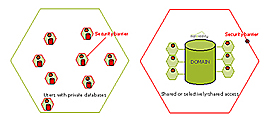
Figure 1 Contrasting Lone Ranger scenarios with
domain-type selective sharing. |
Even
more factors exist in ensuring that material data is application appropriate.
An engineer may have cause to question the quality of the data source
depending on whether they are accredited, or whether or not they publish
the variability of the test results. Being able to examine all this
information prior to using a piece of material data is a vital part
of the design process providing a new level of comfort and peace of
mind to a busy analyst.
Fidelity: getting it right each time
Because of the Lone Ranger scenario described earlier, there is a
significant risk that CAE analysts in a distributed enterprise are
performing related or duplicate simulations with material models that
are not compatible. This can happen even within small groups because
of the lack of communication within teams. Such a scenario causes
unnecessary risk adding to design uncertainty. Some organizations
use product data management (PDM) systems in an attempt to resolve
this problem. PDM systems permit the analyst to attach a material
model input deck to a simulation. This is only a partial solution,
however; there is no way to ensure that teams are working off the
same page with respect to material data. Sharing input decks within
a CAE team ensures fidelity when different analysts are seeking to
describe identical material behavior. Often, however, teams need to
perform variations on a particular simulation. Input decks do not
contain the information needed for the analyst to make a decision
about the appropriateness of the model to his simulation. They fail
to store critical decision making information that would permit the
analyst to make an informed choice.
The use of a material data management system
represents a paradigm shift in this scenario. Here, the material property
data for the enterprise is staged at a single web-based location.
All the underlying property data and supporting information related
to the material model parameters is stored. The analyst can, should
they desire, perform sanity and appropriateness checks to ensure that
the data is right for them. Rather thanstore
input decks as incomprehensible data files, the system simply exports
the data into the desired export formats upon demand. Analysts system-wide
would then be able to access identical information for their applications,
ensuring fidelity.
|
|
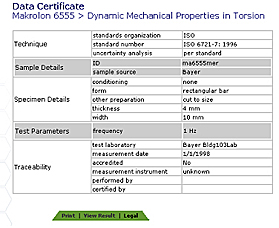
Figure 2 Data certificates allow the assessment
of data pertinence. |
The supply
chain: obtaining content from others
Most enterprises today dynamically manage a wide range of materials
they use in their products. Very few companies today manufacture products
using a small static list of materials. As products evolve and materials
change, data pipelines must exist to ensure a smooth flow of fresh,
pertinent content[4]. This is vital to the material data management
system and to its longevity in the enterprise. The material data needed
by the enterprise logically comes from two types of sources. Internal
laboratories generate data for a number of reasons; such data must
be stored within the system to be disseminated as needed. Very importantly,
however, in a collaborative environment, material data comes from
sources external to the enterprise. It is critical that members of
an enterprise be able to probe the content of its collaborators to
locate data that might be useful to their activity. A system of access
requests ensures that the owners of information maintain control over
the use of their data. The attractiveness of this scenario stems from
two important benefits: ready availability of high quality, pertinent
material properties; time and money savings from not having to test.
In fact, it must be noted that these benefits apply even in cases
where the properties exist within the enterprise. All too often, analysts
may simply not know that data they need exists within the enterprise,
nor may they know whom to ask for the information they need.
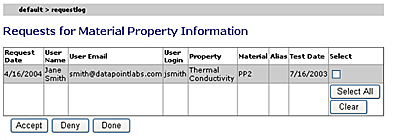
|
|
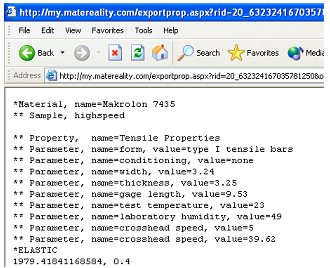
Figure 3 Input decks are generated on-the-fly
once user approves the data. |
Figure
4 Using access requests to control data flow.
Control of
content flow: privacy and fiefdoms
Enterprises are complex entities with widely varying needs with respect
to the use of information. Certain types of data are purposed for
a particular application. For example, data provided for purchase
decisions must simply not be used for other purposes, such as design.
In the case of a plastic fuel tank design, 'purchasing' material data
will evolve around properties of the virgin plastic while the CAE
analyst must necessarily use properties generated after fuel soaking.
In another example, sensitive material data may be generated for the
R&D team which must be protected from access by unauthorized users.
It is clear that a flat database would not be able to handle such
a scenario and would therefore be of limited use to the enterprise.
It would be relegated to storing only the information that anyone
can see, the lowest common denominator. This is a self-defeating and
non-productive scenario which guarantees the eventual demise of the
system. A good material data management system permits the selective
dissemination of material data within the enterprise, respecting the
need for privacy. It would permit highly sensitive information to
be completely hidden, accessible only to those authorized to use it.
Other less sensitive information could be found by users of the system
but not accessible without permission of the data controllers. The
lowest common denominator of public data would be published for all
to see. |
|
|
Risk
mitigation: access control and record keeping
Because a single system must be used for optimal
management of public and private data of the enterprise, access control
becomes an important aspect of a material data management system.
It permits the enterprise to control the dissemination of information
to authorized personnel with a level of flexibility analogous to current
business practice. This includes but is not limited to the following
scenarios: a single user having access to one or more material property
datasets; a designated group of users having access to a data collection
that is pertinent to their activity in the business.
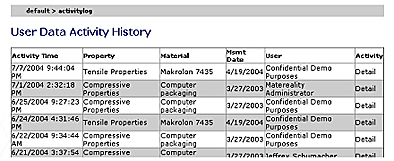
Figure 6 Access logs track data usage.
To ensure proper utilization of the system,
access logs provide detailed records of data access, activity and
use.
Conclusion
Design process enhancement is a major topic
today in cost reduction and system improvement in the enterprise.
Material property data constitutes a small but significant aspect
of the knowledge base of the enterprise. In the context of the CAE
analyst and the design engineer, it is the information that binds
their work to reality. Weakness in this area raises the level of risk
to the enterprise and lowers the efficiency of the design process.
A material data management system creates a robust infrastructure
within the enterprise that permits storage and controlled dissemination
of high quality material properties. It is extensible to the collaborative
environment allowing efficient information interchange and cost and
time savings by preventing attrition of material data.
References
|
|
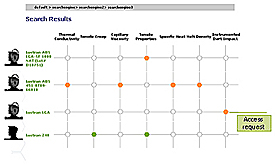
Figure 5 A single system to store both public
and restricted data. |
- 1. C. Lemyze, ' Transforming into Best-in-Class
Manufacturers through PLM', Desktop Engineering, (2003) http://www.deskeng.com/articles/03/sept/commentary/main_dig.htm
- 2. J. E. Fowler, "Manufacturing
Software Interoperability: Problems, Cost, Mitigation" Daratech
Summit, (2000) http://www.mel.nist.gov/msid/sima/daratech/sld001.htm
- 3. C. Foundyller, "Opening Statements",
Daratech IDPS Conference (2004)
- 4. "Needed: Suppliers who can collaborate
throughout the supply chain" Supply Chain Management Review,
(http://www.manufacturing.net/scm/index.asp?layout=siteInfoWebzine&view=Detail&doc_id=96527)
|
|
|
|